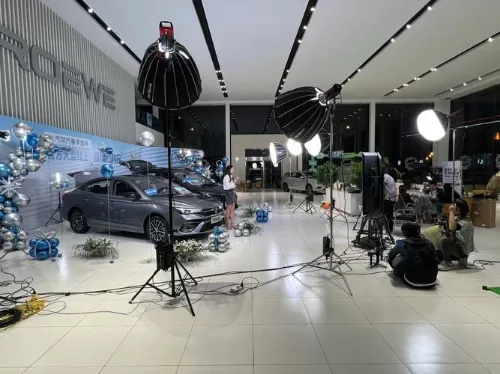Click to Get Big Benefits

The Death of the Poker Face
Automotive Live Commerce kills the guesswork. Instead of relying on a salesman’s vague promises, you watch real-time demos where hosts answer questions like, “How does this SUV handle icy roads?” or “What’s the true cargo space?” These streams aren’t infomercials; they’re unfiltered showcases. Chat comments like “Show the tire tread again!” or “What’s the APR for 800+ credit?” get immediate responses, forcing honesty.
No more “Let me check with my manager” loops. Automotive Live Commerce puts experts on camera, from engineers explaining battery tech to finance managers breaking down loan terms. The curtain is pulled back, and buyers finally see the wizard—no green smoke required.
Price Tags, Not Mind Games
Transparency is the cornerstone of Automotive Live Commerce. Dealers now broadcast pricing spreadsheets live, highlighting fees instead of burying them in fine print. Want to know why the “documentation fee” is $500? The host explains it while scrolling through the actual invoice. This isn’t charity—it’s survival. Younger buyers, raised on Amazon reviews and Venmo splits, demand clarity. Automotive Live Commerce meets them where they are: phones in hand, skepticism intact, and zero patience for games.
Test Drives Go Digital (But Keep the Feel)
Automotive Live Commerce doesn't replace test drives—it enhances them. Hosts take cars through potholed streets, highway merges, and steep driveways while viewers vote on routes via live polls. Chat shouts “Hit the brakes harder!” and the driver obliges, proving stopping power on-camera.
It's crowdsourced car critique. Suspension quirks or cabin noise get flagged instantly, creating a collective “buyer's guide” vibe. You're not just watching a review; you're part of it.
The Consumer Experience
Buyers using Automotive Live Commerce report significant benefits:
Time Savings: Skip dealership visits and paperwork—some transactions take less than an hour.
Reduced Anxiety: No-pressure environments let buyers make decisions at their own pace.
Access to Experts: Hosts often have deep automotive knowledge, answering technical questions without bias.
For busy families or first-time buyers, this approach removes the intimidation factor.
Challenges and Solutions
While promising, Automotive Live Commerce faces hurdles:
Trust Issues: Scams involving fake listings or doctored vehicle histories are on the rise. Reputable platforms combat this with strict verification processes and buyer protection policies.
Limited Test Drives: Virtual tours can't replicate the feel of driving a car. To address this, many services offer at-home test drives or 7-day return policies.
As regulations evolve and platforms mature, these issues are being tackled head-on.
Conclusion
Automotive Live Commerce isn't just a trend—it's reshaping the industry. Dealerships are adopting hybrid models, combining live streams with in-person services to stay competitive. Meanwhile, automakers like Ford and Hyundai are hosting virtual product launches, reaching millions of viewers globally.
For consumers, this shift means more power, more control, and a car-buying experience that aligns with modern lifestyles. No more awkward small talk with salesmen, no more hidden fees, and no more uncertainty.

All News
Others
- Terms of use Terms of use
- Contact Us Contact Us
- Privacy Policy Privacy Policy


